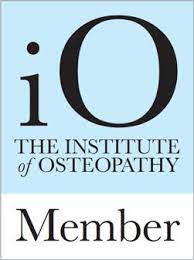Sciatica is a term that is often heard but not always understood. If you’re experiencing pain that radiates from your lower back down to your legs, you may be wondering, “Do I have sciatica?” In this blog, we’ll explore the symptoms, causes, and treatment options for sciatica, empowering you to take proactive steps towards relief and well-being.
What is Sciatica?
Sciatica refers to pain that radiates along the path of the sciatic nerve, which branches from your lower back through your hips and buttocks and down each leg. It typically affects one side of the body and can vary in intensity, from mild discomfort to excruciating pain.
Common Symptoms of sciatica
1. Lower Back Pain
Sciatica often starts with a dull ache or sharp pain in the lower back, which may worsen with prolonged sitting or standing.
2. Leg Pain
The defining symptom of sciatica is pain that travels down the back of the leg from the buttock. It may be felt in the back of the thigh and calf, sometimes reaching the foot or toes. This pain may feel like a shooting or electric sensation, making it difficult to walk or stand.
3. Numbness and Tingling
As well as pain, you may experience numbness, tingling, or a pins-and-needles sensation in the affected leg.
4. Muscle Weakness
In severe cases, sciatica can lead to muscle weakness in the affected leg, making it challenging to perform daily tasks like climbing stairs or lifting objects.
Causes of Sciatica
Sciatica often develops when the sciatic nerve becomes compressed or irritated. However NOT ALL LEG PAIN IS SCIATICA, there are muscular issues for example that may cause pain down the back of leg which can be easily misdiagnosed, this is why it is important to seek professional help if you are experiencing these symptoms.
Common causes include,
1. Herniated Disc – A herniated disc occurs when the soft inner core of a spinal disc protrudes through the tougher outer layer, pressing on the nearby nerves, including the sciatic nerve.
2. Spinal Stenosis -This condition involves the narrowing of the spinal canal, putting pressure on the nerves, including the sciatic nerve.
3. Age related changes to the discs and joints of the spine – As we age, the discs in our spine may lose water content and elasticity, leading to disc degeneration and potential nerve compression.
4. Muscular Spasm – The inflammation and compression of a muscle spasm in the buttock or leg can irritate the sciatic nerve
Seeking Relief
If you’re experiencing symptoms of sciatica, seeking professional help is crucial for accurate diagnosis and effective treatment. At our osteopathic clinic, we specialise in providing comprehensive care for musculoskeletal conditions, including sciatica.
Treatment Options
Osteopathic Manipulative Treatment involves gentle manipulation of the spine and surrounding tissues to relieve pressure on the sciatic nerve and improve mobility.
Exercise Therapy – Specific exercises for strength and mobility can help support the spine, alleviate pain, and prevent future flare-ups.
Pain Management – We may recommend pain-relieving techniques such as heat therapy, ice packs, or advise you to seek advice about NSAIDS to manage discomfort.
Lifestyle Modifications – Making changes to your daily habits, such as increasing daily activity, stress management and breathing exercises can help reduce the risk of aggravating sciatic pain.
Take the First Step Towards Relief
Don’t let sciatica hold you back from enjoying life to the fullest. If you’re unsure whether your symptoms indicate sciatica or if you’re seeking personalised treatment options, we invite you to book a free 15-minute consultation with our experienced osteopathic team to discuss how we can help you manage symptoms of sciatica and move forward with an individualised treatment plan.








